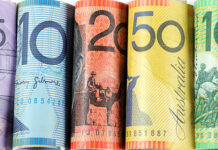Markets
It’s been a quiet session. Trading was already muted in Asian dealings with Chinese and several other local markets closed for the Lunar NY holiday season. The economic calendar failed to inspire too, containing nothing more than European consumer confidence, due after wrapping up this report. It looked that core bonds’ 2023 rally finally hit the ceiling by the end of last week.
A slew of central bank speeches, especially those from ECB members, at long last started to filter through. The central message: monetary tightening is not over yet. ECB’s Kazimir (“need to deliver two more half-point hikes) and Vujic (December guidance on 50 bps hikes is “still reasonable”) were the most recent ones to reinforce that narrative today. Others, eg. Stournaras, argued for a more gradual approach though such views are shared by a minority only. German bond yields eke out another 3 bps at the long end of the curve with the 10y yield (2.2%) now 20 bps back above last week’s lows. Swaps underperform vs Bunds, adding 2.7-5.4 bps across the curve. The 10y yield moves further north from 2.72% (June 2022 interim high), turning previous resistance back into a support zone. US Treasury yields advance between 3.2 bps to 5.2 bps with the wings outperforming the belly of the curve. The 10y yield rose above 3.5% (June 2022 interim high) but we need confirmation of a sustained break in the coming days. The all in all orderly yield uptick doesn’t unsettle riskier markets. European stocks advance with marginal gains to the tune of 0.2%. Wall Street opens with similar gains (Nasdaq).
EUR/USD on currency markets caught some attention by launching an early attempt in the battle for 1.09. The breach higher triggered some minor stop losses but it wasn’t enough for an actual test of the 1.0942 resistance level. After camping north of 1.09 for a few hours, the pair eventually returned to familiar ground around 1.085 as the dollar clawed back. The Japanese yen underperforms G10 peers. Bets on a hawkish twist by the BoJ are being unwound further, pressuring the currency. USD/JPY settles above 130. The more than one big-figure-jump helps the trade-weighted dollar (DXY, 102.23) away from 9-month lows and important support at 101.297. Sterling starts the week on softer footing. EUR/GBP advanced from 0.873 to test 0.88. Cable (GBP/USD) sniffed at recent (December) highs around 1.245 before technical return action brought the pair back to 1.233 at the time of writing. News Headlines
The Hungarian forint underperforms regional peers today with EUR/HUF moving away from the 391.50 support zone towards 397. The move comes after rating agency Fitch last Friday (after market close) revised down the outlook on the Hungarian BBB rating from stable to negative. Fitch sees a high probability of delays in the disbursement of EU funds which would further question policy credibility, highlight governance challenges and potentially hurt investor sentiment. More generally, the rating agency pointed out that a tougher international environment, including higher global interest rates, volatile energy prices and weakening demand from key trading partners is exposing vulnerabilities stemming from a policy mix that is influenced by political considerations. Moody’s and S&P have a similar rating for Hungary, with S&P’s outlook on negative as well.
Eurostat data showed that the EMU general government deficit rose to 3.3% of GDP in Q3, up from 2% in Q2. The statistics agency noted that measures to alleviate the impact of high energy prices started to have a stronger impact on the government balance with the majority of member states continuing to record a government deficit. EMU government expenditures rose by 1% to 50.5% with government revenue declining slightly as the economy slowed. The EMU debt ratio rose to 93% of GDP.












